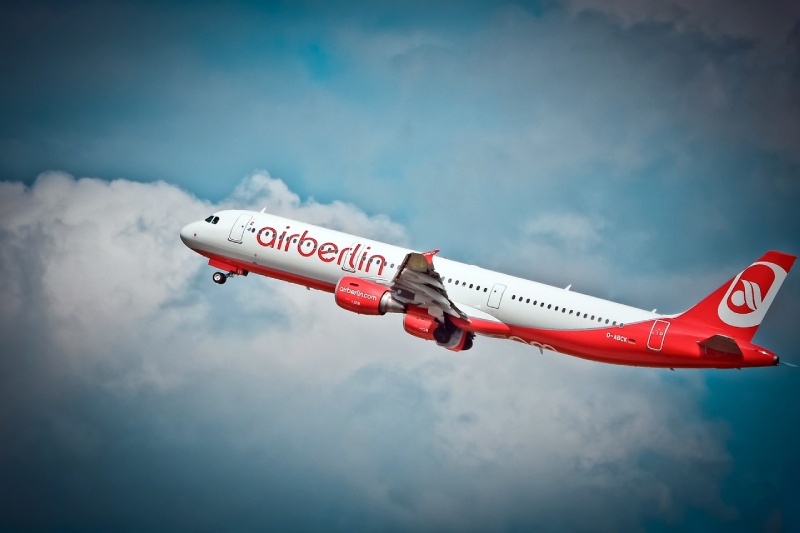Travel
7 Key Components That Ensure the Safety of Airplane Passengers

Flying has become one of the safest modes of transportation, thanks to the rigorous safety standards and advanced technologies employed in the aviation industry. Passengers trust airlines to provide a secure and reliable means of travel. Behind the scenes, several critical components contribute to the safety of airplane passengers. Delve into these key elements that work together to ensure a safe and worry-free flying experience.
Aircraft Design and Engineering
The safety of airplane passengers begins with the meticulous design and engineering of aircraft. Aerospace engineers and experts dedicate extensive research and development efforts to create airplanes with robust structures and systems. The design process prioritizes safety, stability, and performance. Innovations in materials, aerodynamics, and avionics contribute to the development of aircraft that can withstand the stresses of flight while ensuring the safety of passengers and crew.
Routine Aircraft Maintenance
Regular and thorough maintenance is pivotal in preserving the safety and reliability of an aircraft. Skilled technicians conduct routine inspections, encompassing a meticulous review of the aircraft’s vital components, including engines, landing gear, and, crucially, aircraft tires. Their integrity is essential to ensuring safe takeoffs and landings, providing the necessary traction and durability for various runway conditions. Airlines prioritize the use of trusted tires, such as Michelin Aircraft Tires, due to their reputation for excellence in tire technology, further underscoring their commitment to passenger safety and the overall reliability of their fleets.
Avionics and Navigation Systems
Avionics systems play a pivotal role in modern aviation. These electronic systems include navigation, communication, and monitoring equipment. Advanced avionics help pilots navigate through complex airspaces, communicate with air traffic controllers, and monitor the aircraft’s performance in real time. Cutting-edge navigation systems and autopilots ensure accurate and safe flight paths, minimizing the risk of mid-air collisions and navigation errors.
Pilot Training and Expertise
The competence of pilots stands as a paramount factor in ensuring the safety of airline passengers. Pilots are subjected to rigorous and ongoing training that encompasses a wide array of scenarios, including simulator sessions and emergency simulations. These preparations equip them to handle diverse situations, from adverse weather conditions to equipment malfunctions, with composure and precision. Their expertise extends to areas of critical importance, such as decision-making, effective communication, and exceptional flying skills. This comprehensive training regimen and continuous evaluation process constitute an indispensable component of passenger safety, instilling confidence in travelers by assuring them that their flight crew is well-prepared to navigate any challenges that may arise during the journey
Air Traffic Control
Air traffic control (ATC) serves as a linchpin in maintaining the orderly and secure operation of airspace. Highly trained air traffic controllers assume the pivotal responsibility of guiding aircraft during takeoff, landing, and in-flight, ensuring the appropriate spacing and separation between planes. Their clear and concise communication with pilots is instrumental in preventing potential mid-air collisions and maintaining the smooth flow of air traffic. Supported by advanced radar technology and a sophisticated communication infrastructure, the ATC system offers real-time information to both pilots and ground personnel, facilitating seamless coordination and enhancing safety protocols. This vital collaboration between air traffic controllers and flight crews contributes immeasurably to the safety and efficiency of air travel.
Emergency and Safety Equipment
Airplanes are equipped with a comprehensive array of safety and emergency equipment designed to handle unforeseen situations and protect passengers. This includes essential items such as life vests, oxygen masks, fire extinguishers, and emergency slides. Flight attendants, an integral part of passenger safety, undergo extensive training to respond swiftly and effectively to onboard emergencies, providing reassurance to passengers during challenging situations. Additionally, aircraft are equipped with robust fire suppression systems designed to contain and extinguish any potential fires swiftly, mitigating risks and enhancing safety measures on board.
Stringent Regulatory Oversight
A cornerstone of aviation safety lies in the stringent regulatory oversight provided by aviation authorities. In the United States, the Federal Aviation Administration (FAA) assumes a pivotal role by setting and enforcing stringent regulations governing various aspects of aviation, including aircraft design, maintenance, and operation. Airlines and aircraft manufacturers are bound by these regulations, ensuring that safety standards are consistently met and upheld.
Beyond national borders, international aviation bodies, such as the European Union Aviation Safety Agency (EASA), actively contribute to global aviation safety. They set high standards and conduct thorough safety audits, promoting uniformity and excellence in aviation safety practices worldwide. This collaborative effort among regulatory authorities is vital for the safe and secure operation of air travel on a global scale.
Conclusion
The safety of airplane passengers is the result of a comprehensive system that encompasses aircraft design, maintenance, avionics, pilot training, air traffic control, emergency equipment, and regulatory oversight. These key components work together seamlessly to ensure that air travel remains one of the safest modes of transportation in the world. The aviation industry’s unwavering commitment to safety and continuous improvement underscores its dedication to providing passengers with a secure and comfortable flying experience.
-

 Business3 weeks ago
Business3 weeks agoPrakash and Kamal Hinduja: Driving Social and Environmental Change
-
Education4 weeks ago
Fred DuVal: University Leadership as a Critical Resource for Climate Change Research and Life-Saving Solutions
-

 Health3 weeks ago
Health3 weeks agoThe Hinduja Brothers Commitment to Global Health: Empowering Communities Across Borders
-

 Cryptocurrency3 weeks ago
Cryptocurrency3 weeks agoDesigned For The Masses: How Akasha (AK1111) Is Unlocking Crypto For The Next Billion Users
-

 Cryptocurrency4 weeks ago
Cryptocurrency4 weeks agoNexaglobal & Future World Token (FWT): Could This Be the Next Big Crypto Investment of 2025?
-

 Sports4 weeks ago
Sports4 weeks agoWomen’s NCAA Tournament 2025 Sweet 16: Full Schedule, Fixtures, Teams, Bracket, and How to Watch March Madness Basketball Match Live
-

 Startup2 weeks ago
Startup2 weeks agoCost-Saving Strategies Every Small Business Owner Should Know to Boost Efficiency
-

 Startup3 weeks ago
Startup3 weeks agoMatthew Denegre on the Art of Deal Sourcing: Finding the Right Investment Opportunities











